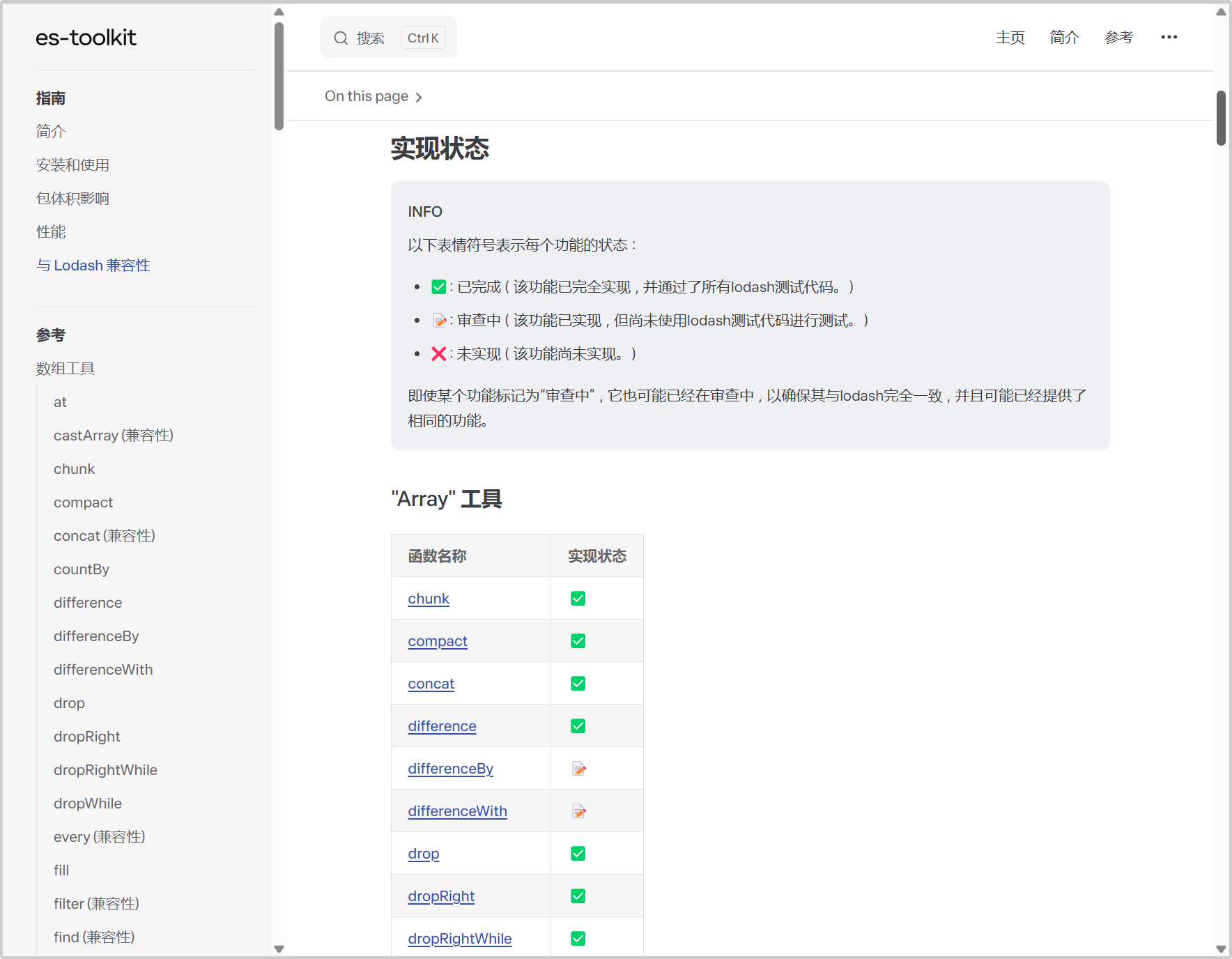目录
AVL树的概念
二叉树的构建
平衡因子的更新
旋转
左单旋
旋转过程
左单旋代码
右单旋
旋转过程
右单旋代码
左右双旋
发生情况
抽象图
具体图
平衡因子更新
左右双旋代码
右左双旋
右左双旋旋代码
验证测试AVL树
测试成员函数
测试代码
AVL树实现代码
AVL树的删除(了解)
AVL树的性能
在之前对map/multimap/set/multiset进行了简单的介绍,而这几个容器有个共同点是:其底层都是按照二叉搜索树来实现的,但是二叉搜索树有其自身的缺陷,假如往树中插入的元素有序或者接近有序,二叉搜索树就会退化成单支树,时间复杂度会退化成O(N),因此map、set等关联式容器的底层结构是对二叉树进行了平衡处理,即采用平衡树来实现
AVL树的概念
一个高等平衡的二叉树
二叉搜索树虽可以缩短查找的效率,但如果数据有序或接近有序二叉搜索树将退化为单支树,查找元素相当于在顺序表中搜索元素,效率低下。因此,两位俄罗斯的数学家G.M.Adelson-Velskii和E.M.Landis在1962年
发明了一种解决上述问题的方法:当向二叉搜索树中插入新结点后,如果能保证每个结点的左右子树高度之差的绝对值不超过1(需要对树中的结点进行调整),即可降低树的高度,从而减少平均搜索长度。
一棵AVL树或者是空树,或者是具有以下性质的二叉搜索树:·它的左右子树都是AVL树
·左右子树高度之差(简称平衡因子)的绝对值不超过1(-1/0/1)

如果一棵二叉搜索树是高度平衡的,它就是AVL树。如果它有n个结点,其高度可保持在
O(log n),搜索时间复杂度O(log n)
二叉树的构建
参考文章:
平衡因子的更新

平衡因子更新规则
1、parent->_bf == 0说明之前parent->_bf 是 1 或者 -1说明之前parent一边高一边低,这次插入填上矮的那一边,parent所在的字数高度不变,不需要继续向上更新
2、parent->_bf == 1 或者 -1 说明之前parent->_bf == 0,两边一样高,现在插入一边更高了,parent所在子树高度变高了,继续往上更新
3、parent->_bf == 2 或者 -2,说明之前 parent->_bf == 1 或者 -1,现在插入严重不平衡,违反规则,就地处理 -- 旋转
旋转
根据AVL树概念可以得到以下的旋转规则
旋转规则:
1、让这颗子树左右高度差不超过1
2、旋转过程中继续保持他是搜索树
3、更新调整孩子节点的平衡因子
4、让这颗子树的高度跟插入前保持一致
左单旋
抽象图



旋转过程

需要注意的是,这里的旋转可能是指的是 子树 或者 整棵树,注意到第四条规则,保持让这颗子树的高度跟插入前保持一致,0的话就不需要继续向上更新,但是还是1或者-1的话就需要继续向上更新平衡因子了,假如又出现2的平衡因子那么就需要继续旋转,直到根节点

左单旋代码
//左单旋
void RotateL(Node* parent)
{
Node* subR = parent->_right; //父节点的右孩子
Node* subRL = subR->_left; //父节点的右孩子的左孩子
parent->_right = subRL;
if (subRL) //如果subRL不为空,那么它的父节点更新为parent
subRL->_parent = parent;
Node* ppNode = parent->_parent; //保留父节点的父节点(因为这可能是一个子树)
subR->_left = parent; //更新subR的左孩子
parent->_parent = subR; //把之前的父节点更新为subR的左孩子
if (ppNode == nullptr) //假如ppNode为空,说明这是正棵树
{
_root = subR; //更新root节点
_root->_parent = nullptr; //把它的父节点置为空
}
else //否则就判断它是左还是右节点,再更新该旋转子树的父节点
{
if (ppNode->_left == parent)
{
ppNode->_left = subR;
}
else
{
ppNode->_right = subR;
}
subR->_parent = ppNode; //新该旋转子树的父节点
}
parent->_bf = subR->_bf = 0;//旋转完这次操作那么就更新这俩子树的平衡因子
//其他节点的平衡因子之所以不需要更新,是因为它们的子树并没有旋转,不受影响
}右单旋
抽象图

旋转过程

右单旋代码
//右单旋 -- 原理同左单旋
void RotateR(Node* parent)
{
Node* subL = parent->_left; //父节点的左孩子
Node* subLR = subL->_right; //父节点的左孩子的右孩子(可能为一棵子树)
parent->_left = subLR;
if (subLR)
subLR->_parent = parent;
Node* ppNode = parent->_parent;
subL->_right = parent;
parent->_parent = subL;
//if (_root == parent); 这种写法也是一个道理
if (ppNode == nullptr)
{
_root = subL;
_root->_parent = nullptr;
}
else
{
if (ppNode->_left == parent)
{
ppNode->_left = subL;
}
else
{
ppNode->_right = subL;
}
subL->_parent = ppNode;
}
subL->_bf = parent->_bf = 0;
}左右双旋
发生情况

抽象图

具体图

平衡因子更新
这里是b插入,c插入大同小异

左右双旋代码
//左右双旋
void RotateLR(Node* parent)
{
Node* subL = parent->_left; //记录父亲的左子树
Node* subLR = subL->_right;//记录父亲的左子树的右子树
int bf = subLR->_bf; //记录subLR节点的平衡因子,便以判断插入在b(左子树)还是c(右子树)
//先左旋转,再右旋转
RotateL(parent->_left);
RotateR(parent);
//判断插入情况并更新平衡因子
if (bf == -1) //subLR左子树新增
{
subL->_bf = 0; //这里的平衡因子在上面旋转的时候就已经更新了,但是为了不耦合单旋代码,特地在这里再进行一次更新
parent->_bf = 1;//这里实际更新的(如果单旋正常工作)
subLR->_bf = 0; //正常更新平衡因子一定会为0
}
else if (bf == 1) //subLR右子树新增
{
subL->_bf = -1;
parent->_bf = 0;
subLR->_bf = 0;
}
else if (bf == 0) //subLR自己就是新增的节点,单折线型
{
subL->_bf = 0;
parent->_bf = 0;
subLR->_bf = 0;
}
else
{
assert(false); //程序出错
}
}右左双旋
实际操作和左右双旋大致一样,这里是c插入

右左双旋旋代码
//右左双旋
void RotateRL(Node* parent)
{
Node* subR = parent->_right;
Node* subRL = subR->_left;
int bf = subRL->_bf;
//先右旋转,再左旋转
RotateR(parent->_right);
RotateL(parent);
//判断插入情况并更新平衡因子
if (bf == -1)
{
subR->_bf = 1;
parent->_bf = 0;
subRL->_bf = 0;
}
else if (bf == 1)
{
subR->_bf = 0;
parent->_bf = -1;
subRL->_bf = 0;
}
else if (bf == 0)
{
subR->_bf = 0;
parent->_bf = 0;
subRL->_bf = 0;
}
else
{
assert(false);
}
}验证测试AVL树
测试成员函数
int Height(Node* root) //递归遍历高度
{
if (root == nullptr)
return 0;
int lh = Height(root->_left);
int rh = Height(root->_right);
return lh > rh ? lh + 1 : rh + 1;
}
bool IsBalance() //便以外面调用
{
return _IsBalance(_root);
}
bool _IsBalance(Node* root) //判断是否平衡,这里我们不选择通过平衡因子判断是否平衡,因为平衡因子是我们自己更新的
{
if (root == nullptr)
{
return true;
}
int leftHeight = Height(root->_left);
int rightHeight = Height(root->_right);
if (rightHeight - leftHeight != root->_bf) //顺便测试平衡因子,并打印出异常地方
{
cout << root->_kv.first << "平衡因子异常" << endl;
return false;
}
return abs(rightHeight - leftHeight) < 2
&& _IsBalance(root->_left)
&& _IsBalance(root->_right);
}测试代码
void TestAVLTree1() //测试代码
{
//int a[] = { 8, 3, 1, 10, 6, 4, 7, 14, 13 };
//int a[] = { 16, 3, 7, 11, 9, 26, 18, 14, 15 };
int a[] = { 4, 2, 6, 1, 3, 5, 15, 7, 16, 14 };
AVLTree<int, int> t;
for (auto e : a)
{
t.Insert(make_pair(e, e));
}
t.Inorder();
cout << t.IsBalance() << endl;
}
void TestAVLTree2() //测试代码,随机数的检查
{
srand((unsigned int)time(NULL));
const size_t N = 10000;
AVLTree<int, int> t;
for (size_t i = 0; i < N; ++i)
{
size_t x = rand();
t.Insert(make_pair(x, x));
//cout << t.IsBalance() << endl;
}
t.Inorder();
cout << t.IsBalance() << endl;
}

旋转总结:
假如以pParent为根的子树不平衡,即pParent的平衡因子为2或者-2,分以下情况考虑
1. pParent的平衡因子为2,说明pParent的右子树高,设pParent的右子树的根为pSubR
当pSubR的平衡因子为1时,执行左单旋
当pSubR的平衡因子为-1时,执行右左双旋
2. pParent的平衡因子为-2,说明pParent的左子树高,设pParent的左子树的根为pSubL
当pSubL的平衡因子为-1是,执行右单旋
当pSubL的平衡因子为1时,执行左右双旋
旋转完成后,原pParent为根的子树个高度降低,已经平衡,不需要再向上更新
AVL树实现代码
#pragma once
#include<iostream>
#include<assert.h>
#include<time.h>
using namespace std;
template<class K, class V>
struct AVLTreeNode
{
pair<K, V> _kv;
AVLTreeNode<K, V>* _left;
AVLTreeNode<K, V>* _right;
AVLTreeNode<K, V>* _parent;
int _bf; //balance factor 平衡因子
AVLTreeNode(const pair<K, V>& kv) //初始化
:_kv(kv)
, _left(nullptr)
, _right(nullptr)
, _parent(nullptr)
, _bf(0)
{}
};
template<class K, class V>
struct AVLTree
{
typedef AVLTreeNode<K, V> Node;
public:
bool Insert(const pair<K, V>& kv) //插入
{
if (_root == nullptr) //根节点为空就直接插入
{
_root = new Node(kv);
return true;
}
//可以写成循环就用循环
//找到插入的地方
Node* parent = nullptr;
Node* cur = _root;
while (cur)
{
if (cur->_kv.first < kv.first)
{
parent = cur;
cur = cur->_right;
}
else if (cur->_kv.first > kv.first) //小的放到左边,向左边走
{
parent = cur;
cur = cur->_left;
}
else
{
return false; //插入失败
}
}
//开始插入
cur = new Node(kv);
if (parent->_kv.first < kv.first)
{
parent->_right = cur;
cur->_parent = parent;
}
else
{
parent->_left = cur;
cur->_parent = parent;
}
//更新平衡因子
while (parent) //更新到根节点的时候停止
{
if (cur == parent->_left) //左边新增,--
{
parent->_bf--;
}
else //右边新增,++
{
parent->_bf++;
}
//1、parent->_bf == 0说明之前parent->_bf 是 1 或者 -1
//说明之前parent一边高一边低,这次插入填上矮的那一边,parent所在的字数高度不变,不需要继续向上更新
//2、parent->_bf == 1 或者 -1 说明之前parent->_bf == 0,两边一样高,现在插入一边更高了
//parent所在子树高度变高了,继续往上更新
//3、parent->_bf == 2 或者 -2,说明之前 parent->_bf == 1 或者 -1,现在插入严重不平衡,违反规则
//就地处理 -- 旋转
//旋转:
//1、让这颗子树左右高度差不超过1
//2、旋转过程中继续保持他是搜索树
//3、更新调整孩子节点的平衡因子
//4、让这颗子树的高度跟插入前保持一致
if (parent->_bf == 0) //当平衡因子为0时停止跳出循环
{
break;
}
else if (parent->_bf == 1 || parent->_bf == -1)
{
cur = parent;
parent = parent->_parent;
}
else if (parent->_bf == 2 || parent->_bf == -2)
{
//二叉树有问题了需要 旋转解决
//左单旋
if (parent->_bf == 2 && cur->_bf == 1)
{
RotateL(parent);
}
//右单旋
else if (parent->_bf == -2 && cur->_bf == -1)
{
RotateR(parent);
}
//左右双旋
else if (parent->_bf == -2 && cur->_bf == 1)
{
RotateLR(parent);
}
//右左双旋
else if (parent->_bf == 2 && cur->_bf == -1)
{
RotateRL(parent);
}
else
{
assert(false);
}
break;
}
else
{
assert(false); //再有情况就直接断死,已经坏掉了(代码出错)
}
}
return true; //插入成功
}
//左单旋
void RotateL(Node* parent)
{
Node* subR = parent->_right; //父节点的右孩子
Node* subRL = subR->_left; //父节点的右孩子的左孩子
parent->_right = subRL;
if (subRL) //如果subRL不为空,那么它的父节点更新为parent
subRL->_parent = parent;
Node* ppNode = parent->_parent; //保留父节点的父节点(因为这可能是一个子树)
subR->_left = parent; //更新subR的左孩子
parent->_parent = subR; //把之前的父节点更新为subR的左孩子
if (ppNode == nullptr) //假如ppNode为空,说明这是正棵树
{
_root = subR; //更新root节点
_root->_parent = nullptr; //把它的父节点置为空
}
else //否则就判断它是左还是右节点,再更新该旋转子树的父节点
{
if (ppNode->_left == parent)
{
ppNode->_left = subR;
}
else
{
ppNode->_right = subR;
}
subR->_parent = ppNode; //新该旋转子树的父节点
}
parent->_bf = subR->_bf = 0;//旋转完这次操作那么就更新这俩子树的平衡因子
//其他节点的平衡因子之所以不需要更新,是因为它们的子树并没有旋转,不受影响
}
//右单旋 -- 原理同左单旋
void RotateR(Node* parent)
{
Node* subL = parent->_left; //父节点的左孩子
Node* subLR = subL->_right; //父节点的左孩子的右孩子(可能为一棵子树)
parent->_left = subLR;
if (subLR)
subLR->_parent = parent;
Node* ppNode = parent->_parent;
subL->_right = parent;
parent->_parent = subL;
//if (_root == parent); 这种写法也是一个道理
if (ppNode == nullptr)
{
_root = subL;
_root->_parent = nullptr;
}
else
{
if (ppNode->_left == parent)
{
ppNode->_left = subL;
}
else
{
ppNode->_right = subL;
}
subL->_parent = ppNode;
}
subL->_bf = parent->_bf = 0;
}
//左右双旋
void RotateLR(Node* parent)
{
Node* subL = parent->_left; //记录父亲的左子树
Node* subLR = subL->_right;//记录父亲的左子树的右子树
int bf = subLR->_bf; //记录subLR节点的平衡因子,便以判断插入在b(左子树)还是c(右子树)
//先左旋转,再右旋转
RotateL(parent->_left);
RotateR(parent);
//判断插入情况并更新平衡因子
if (bf == -1) //subLR左子树新增
{
subL->_bf = 0; //这里的平衡因子在上面旋转的时候就已经更新了,但是为了不耦合单旋代码,特地在这里再进行一次更新
parent->_bf = 1;//这里实际更新的(如果单旋正常工作)
subLR->_bf = 0; //正常更新平衡因子一定会为0
}
else if (bf == 1) //subLR右子树新增
{
subL->_bf = -1;
parent->_bf = 0;
subLR->_bf = 0;
}
else if (bf == 0) //subLR自己就是新增的节点,单折线型
{
subL->_bf = 0;
parent->_bf = 0;
subLR->_bf = 0;
}
else
{
assert(false); //程序出错
}
}
//右左双旋
void RotateRL(Node* parent)
{
Node* subR = parent->_right;
Node* subRL = subR->_left;
int bf = subRL->_bf;
//先右旋转,再左旋转
RotateR(parent->_right);
RotateL(parent);
//判断插入情况并更新平衡因子
if (bf == -1)
{
subR->_bf = 1;
parent->_bf = 0;
subRL->_bf = 0;
}
else if (bf == 1)
{
subR->_bf = 0;
parent->_bf = -1;
subRL->_bf = 0;
}
else if (bf == 0)
{
subR->_bf = 0;
parent->_bf = 0;
subRL->_bf = 0;
}
else
{
assert(false);
}
}
void Inorder() //让外部调用内部的中序,因为外部不好传根节点,我们在内部调用可以解决这一点
{
_Inorder(_root);
}
void _Inorder(Node* root) //内部的中序,对于排序好的二叉树来说,中序遍历刚好可以按照顺序遍历
{
if (root == nullptr)
return;
_Inorder(root->_left);
cout << root->_kv.first << ":" << root->_kv.second << endl;
_Inorder(root->_right);
}
int Height(Node* root) //递归遍历高度
{
if (root == nullptr)
return 0;
int lh = Height(root->_left);
int rh = Height(root->_right);
return lh > rh ? lh + 1 : rh + 1;
}
bool IsBalance() //便以外面调用
{
return _IsBalance(_root);
}
bool _IsBalance(Node* root) //判断是否平衡,这里我们不选择通过平衡因子判断是否平衡,因为平衡因子是我们自己更新的
{
if (root == nullptr)
{
return true;
}
int leftHeight = Height(root->_left);
int rightHeight = Height(root->_right);
if (rightHeight - leftHeight != root->_bf) //顺便测试平衡因子,并打印出异常地方
{
cout << root->_kv.first << "平衡因子异常" << endl;
return false;
}
return abs(rightHeight - leftHeight) < 2
&& _IsBalance(root->_left)
&& _IsBalance(root->_right);
}
private:
Node* _root = nullptr;
};
void TestAVLTree1() //测试代码
{
//int a[] = { 8, 3, 1, 10, 6, 4, 7, 14, 13 };
//int a[] = { 16, 3, 7, 11, 9, 26, 18, 14, 15 };
int a[] = { 4, 2, 6, 1, 3, 5, 15, 7, 16, 14 };
AVLTree<int, int> t;
for (auto e : a)
{
t.Insert(make_pair(e, e));
}
t.Inorder();
cout << t.IsBalance() << endl;
}
void TestAVLTree2() //测试代码,随机数的检查
{
srand((unsigned int)time(NULL));
const size_t N = 10000;
AVLTree<int, int> t;
for (size_t i = 0; i < N; ++i)
{
size_t x = rand();
t.Insert(make_pair(x, x));
//cout << t.IsBalance() << endl;
}
t.Inorder();
cout << t.IsBalance() << endl;
}
AVL树的删除(了解)
因为AVL树也是二叉搜索树,可按照二叉搜索树的方式将节点删除,然后再更新平衡因子,删除节点后的平衡因子更新,最差情况下一直要调整到根节点的位置,具体实现就不是AVL树的强项了,有兴趣可以自行学习
AVL树的性能
AVL树是一棵绝对平衡的二叉搜索树,其要求每个节点的左右子树高度差的绝对值都不超过1,这样可以保证查询时高效的时间复杂度,即log_2 (N)。
但是如果要对AVL树做一些结构修改的操作,性能非常低下,比如:插入时要维护其绝对平衡,旋转的次数比较多,更差的是在删除时,有可能一直要让旋转持续到根的位置。
因此:如果需要一种查询高效且有序的数据结构,而且数据的个数为静态的(即不会改变),可以考虑AVL树,但一个结构经常修改,就不太适合。


















